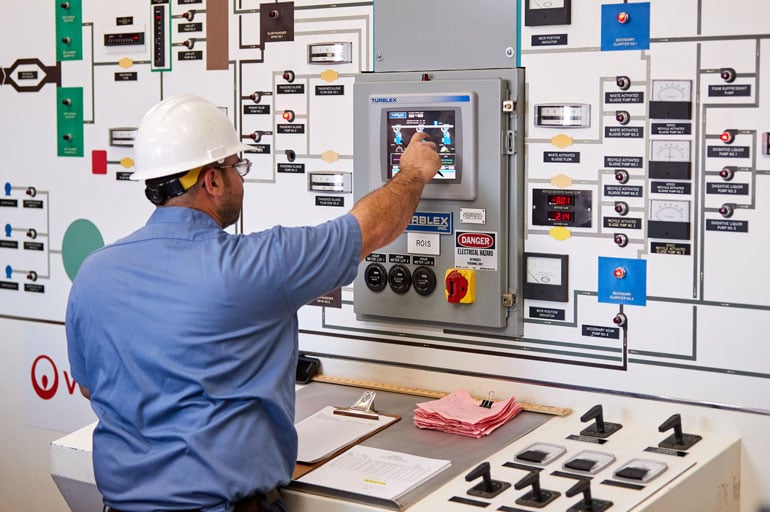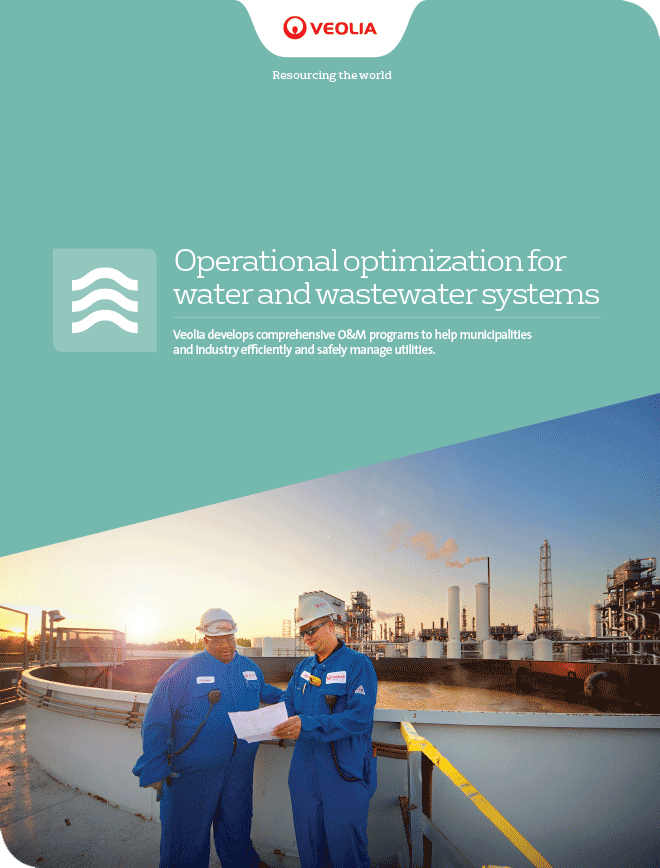Can digital applications be used to support the safe operation of water and wastewater treatment in the U.S.? Municipalities and communities are saying yes. And now, they're beginning to look at an even bolder digital frontier: artificial intelligence.
While water and wastewater treatment has traditionally been overseen by teams of professionals monitoring functions at treatment plants, many municipalities have found that the efforts of trained operators can be complemented with digital technologies such as computers that provide real-time data on a given plant’s performance (widely known as SCADA systems).
The evolution of SCADA systems has helped plants minimize errors that can lead to malfunctions or regulatory permit violations, improving efficiency and helping reduce costs for energy and supplies. The systems are integrated with real-time data that helps make operators do their jobs more efficiently and safely. Operators are accustomed to using these tools and reacting to the data presented thereby avoiding problems, savings costs, and delivering better performance.
But new advances in AI are reshaping the future of water and wastewater operations.
AI vs. traditional SCADA systems
With AI technology, digital monitoring and data input help anticipate problems before they occur. The technology can also provide advice or guidance on how to solve a problem before it becomes more serious or operate more efficiently.
Most operations have control loops where limited operational adjustments are made from a few points of data - chlorine feed where flow and residual measurement are used to adjust feed to maintain a set residual.
Imagine extending this single point idea across key plant processes like breakpoint chlorination and nitrification and nutrient removal at a wastewater plant, changing the biological treatment time due to an approaching winter season or all of these. With AI technology, SCADA data now can become real-time operating advice across these complex operations or can actually take action without operator intervention.
Beyond operations, maintenance issues are anticipated before they occur and corrective measures identified. In many cases, the sensors are also capable of automatically making adjustments in the plant’s existing instrumentation to correct any issues they have detected.
This type of advanced predictive maintenance is what sets AI apart from traditional SCADA systems.
One example of this is happening right now in Tacoma, Washington, where the city is actively seeking to achieve a number of objectives with AI, including:
- Detect real-time changes in effluent flow and propose adjustments to improve water quality
- Propose operational adjustments to reduce operating costs (i.e., reductions in energy or chemical usage)
- Ensure the city’s plants remain in permit compliance
- Integrate AI with existing computerized control systems

Smaller-scale AI pilot programs have already been implemented at other locations in the U.S., including the wastewater treatment plant in Pigeon Forge, TN, where operators recently installed strategically-placed AI sensors to gauge dissolved oxygen levels. The sensors, which are capable of monitoring chemical levels and adjusting as needed, have helped reduce energy costs at the plant by as much as 20 percent.
Practical examples of AI cost savings in Europe
U.S. municipalities looking to incorporate AI into their water treatment systems have been encouraged by examples where advanced AI systems have been put to use successfully in similar plants. In Cuxhaven, Germany, sophisticated AI sensors were installed in the city’s wastewater treatment plant in 2017 to help reduce energy costs associated with aeration. This has led to a 30 percent reduction in energy usage at the plant, leading to cost-savings for the municipality and contributing to the country’s climate goals.
In Denmark, where water and wastewater treatment accounts for two percent of the country’s electrical consumption (the same as in the U.S.), AI has been incorporated into several plants, combining data gathered through multiple sensors with statistical analysis and process knowledge, which enables the system to automatically adapt to changing conditions. This effort is expected to contribute to greater plant performance and reduced errors.
Sounds great. How do we start?
Successful applications of AI begin with defining the objectives. Are you seeking better performance around a single unit process, like use of oxygen at an aeration basin or disinfection residuals, or a larger scale use? Are you seeking only guidance to the operator or guidance and control?
From there, integrating AI into existing water and wastewater treatment plants requires a careful analysis of each plant’s components to identify the optimal way to install sensor probes, which provide real-time data of how the plant is functioning and then makes corresponding adjustments while also alerting operators to potential problems.
These are steps that an experienced water and wastewater operations partner can assist municipalities with.
For municipalities considering an AI solution:
- Updating existing plant instrumentation and updating existing digital platforms, such as SCADA computer data systems, to align with AI technology
- Installing automated probes in key components of plant equipment so they are strategically located to ensure accurate readings
- Making sure probes are routinely cleaned, inspected, calibrated and replaced as necessary
Operators also need to be cautious about leaving their updated systems vulnerable to cybersecurity attacks, ensuring the system operates as independently as possible from open Internet platforms.
Because AI offers enormous potential for cost-savings and enhanced environmental sustainability, U.S. municipalities are already seeking to invest in these new AI technologies.


